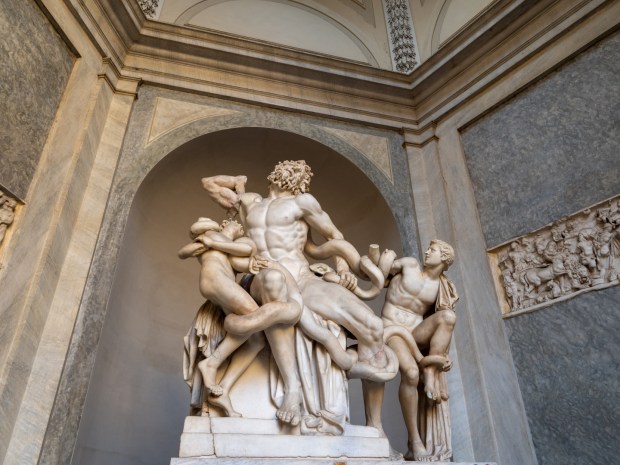On May 24, 2023, the Vatican court heard the defendants and several witnesses in a case brought against climate activists who glued themselves to a famous statue in the Vatican Museums, the Laocoön, last August. The defendants denied any intention to damage the sculpture. Meanwhile, representatives of the "Popes' Museums" claimed to fear "permanent" damage.
On August 18, 2022, Italian activists from the "Ultima Generazione" (“Last Generation”) association set their sights on the famous Laocoön statue. The work probably dates either from the first century BC or from the first or second century AD. It was rediscovered in the 16th century and has since been on display in the Vatican Museums. The activists' aim: to raise awareness of authorities' inaction in the face of climate change.
Charged with damaging a "public monument of inestimable historic-artistic value" using a "tenacious and corrosive" adhesive, Guido Viero and Ester Goffi — who glued themselves to the statue — were present at the hearing. Laura Zorzini, who took photos of the event, was absent. An initial, very brief preliminary hearing took place on March 9.

The defendants’ reasoning
The first defendant, Guido Viero, 62, explained that he had wanted to carry out an action for his daughter and granddaughter, and "for future generations." He wanted to "warn citizens" and protest against the Italian government's lack of investment in sustainable energy. On the base of the sculpture in question, the activists spread a sign demanding "no gas and no coal."
Judge Giuseppe Pignatone pointed out that the Vatican Museums were located in Vatican City, not on Italian territory. Guido Viero replied that he had thought the gesture would be "more media-friendly" there. He also explained that he had "symbolically" chosen the Laocoon to evoke the myth of the man "who sought to warn his fellow citizens of the misfortunes to come.” The sculpture, which is one of the Museums' emblems, represents the Trojan priest who tried to unmask the ruse of the Trojan Horse in the Iliad.
The accused also claimed that they had "absolutely ruled out" any damage to the artwork. "Our actions will never harm people or objects," Viero declared. Thus, he assured the judge, the activists had "informed themselves" about the material used to glue themselves to the sculpture, an adhesive "that can be easily removed with acetone.”
Ester Goffi, a contemporary art graduate, also claimed to have been unaware of any possible damage to the statue. According to her, an expert had certified that the product left no traces on the skin and "reversible" damage to the marble. She also claimed that the ungluing process had not harmed her hand.
Testimony from security guards and restaurant owners
The court heard several witnesses, including a security guard, a gendarme, and the Museums' restoration manager, Guy Devreux, whom the institution had contacted to repair the Laocoon. The latter informed the court that the marble restoration work had taken less time than the initial estimate — which was just over 15,000 euros.
In all, it took the experts a week, not least because the Museums had requested "a quick job" to avoid depriving tourists of this world-famous work for too long, he explained. As things stand, Guy Devreux described the damage as potentially "permanent," as the work they carried out only served to "mask" the damage to the marble.
The base, on which the activists had stuck themselves, is "an integral part" of the work of art, the restorer added. The upper part of the base "supports the entire sculpture," he argued, adding that the base could be dated between 1815 and 1957.
The next hearing, set for June 12 at 2.30pm, will consist of deliberations and sentencing.



